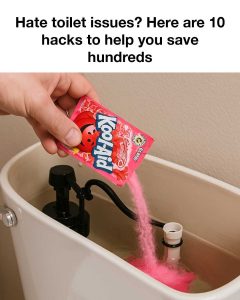Toilet problems aren’t just annoying—they can quickly become expensive if left untreated. Whether it’s a silent leak that drives up your water bill or a stubborn clog that requires a plumber, these issues can escalate fast. A typical plumber visit ranges between $100 and $300 depending on the severity, and that’s not including the potential for water damage repairs, which could cost even more if flooring or walls are affected. Knowing the most common toilet issues and how to handle them on your own can save you both time and money in the long run. With just a bit of knowledge and some basic tools, you can keep your toilet running smoothly and avoid unnecessary expenses.

Taking care of your toilet doesn’t need to be complicated, but regular upkeep is key. Monthly checks can go a long way in preventing breakdowns. Look for signs of wear, check for leaks, and make sure the flush mechanism works properly. A clean, well-functioning toilet not only helps you avoid emergency repairs, but it also uses less water, saving you money on your utility bill. That’s why investing a few minutes each month into maintenance is so worthwhile—it can prevent much bigger problems down the road.
One clever hack to detect leaks involves using something you may already have at home: a packet of Kool-Aid. Pick a dark-colored flavor like grape or cherry and pour it into the toilet tank—just the tank, not the bowl. Let it sit for 30 minutes without flushing. If you see the color seep into the bowl, you’ve got a leak. This method is simple, cheap, and surprisingly effective at catching problems before they drive up your water costs.
If your toilet is clogged but you’re not ready to call a plumber, try this environmentally friendly trick using household staples: baking soda and vinegar. Start by pouring one cup of baking soda into the toilet, followed by two cups of vinegar. Let it fizz for about 30 minutes. After that, flush the toilet with hot water. This natural chemical reaction helps break down clogs without using harsh store-bought chemicals, making it both safe and eco-conscious.
Next, take a look at the float inside your toilet tank. This part controls the water level, which affects how well your toilet flushes. If it’s too high, water may overflow; too low, and flushing becomes ineffective. Adjusting the float is simple. Depending on the design, you can bend the float arm or turn a screw to get the right water level. This tweak ensures efficient flushing while avoiding wasted water.
Another water-saving option is installing a dual-flush converter. This gives you two flushing choices: a light flush for liquid waste and a full flush for solid waste. These devices are easy to install and can dramatically reduce your water usage, which is great for the environment and your wallet. You don’t need a professional to get this done—most converters come with simple instructions and take only a few minutes to set up.
If you want to save even more water without changing how you flush, consider using a toilet tank bank. This device sits in your toilet tank and takes up space, so your tank uses less water with every flush. It can save up to 0.8 gallons per flush, and over time, that adds up. Tank banks are inexpensive and easy to install, making them a smart choice for anyone looking to reduce water use without sacrificing performance.
Don’t overlook the flapper—the rubber seal inside your toilet tank that controls water release during flushing. A worn-out flapper can cause leaks that waste gallons of water daily. Check it regularly, and if it looks damaged or warped, replace it. New flappers are affordable and easy to install yourself. This small fix can have a big impact on your toilet’s efficiency.
Loose bolts at the base of your toilet can cause more trouble than you might think. Not only can they make your toilet wobble, but they can also lead to leaks or even damage the floor beneath. Check the bolts periodically and tighten them with a wrench if needed. Just be careful not to overtighten, which can crack the porcelain. A snug fit is all you need to keep things stable and secure.
If you’re dealing with a minor blockage and don’t have a plunger on hand, a wire coat hanger might do the trick. Straighten the hanger and gently use it to push through the clog. Be cautious not to scratch the porcelain as you work. While this method isn’t ideal for major clogs, it can be a quick and easy fix for smaller ones.
Mineral deposits can gradually accumulate in your toilet and affect its performance. Using a product like CLR (Calcium, Lime, and Rust remover) can help keep things clean. Apply CLR to any build-up inside the toilet, let it sit for a few minutes, then scrub with a brush. Regular use helps prevent scaling and keeps your toilet running efficiently.
Lastly, if you live in a humid environment, you might notice your toilet tank “sweating.” This happens when cold water in the tank condenses on the outside, potentially damaging your floor over time. A toilet tank insulation kit can solve this. These kits are widely available and easy to install, helping you prevent moisture buildup and protect your flooring.
All in all, these simple toilet hacks are practical, affordable, and incredibly effective. You don’t need to be a professional to maintain your toilet and avoid common problems. A little time and attention now can save you from the stress and cost of major repairs later. Plus, many of these tips help conserve water, making them environmentally friendly too. By keeping your toilet in good shape, you’re not just saving money—you’re also doing your part for the planet. So grab your toolkit, roll up your sleeves, and take control of your toilet’s health before a small issue becomes a big problem.





